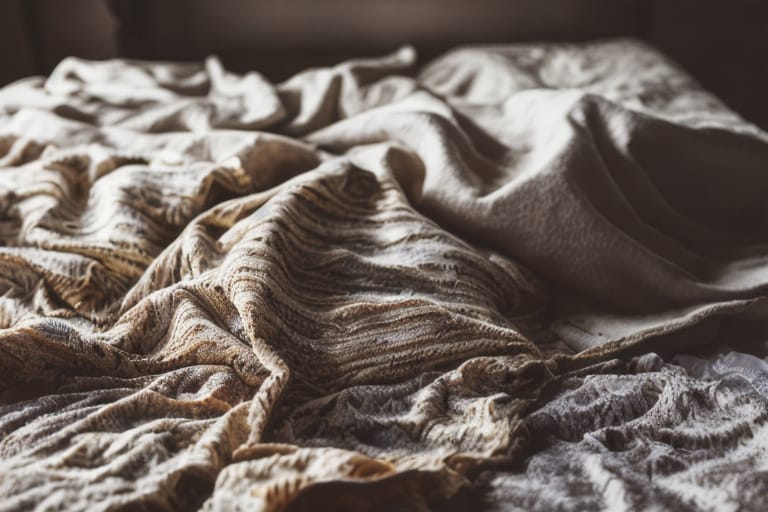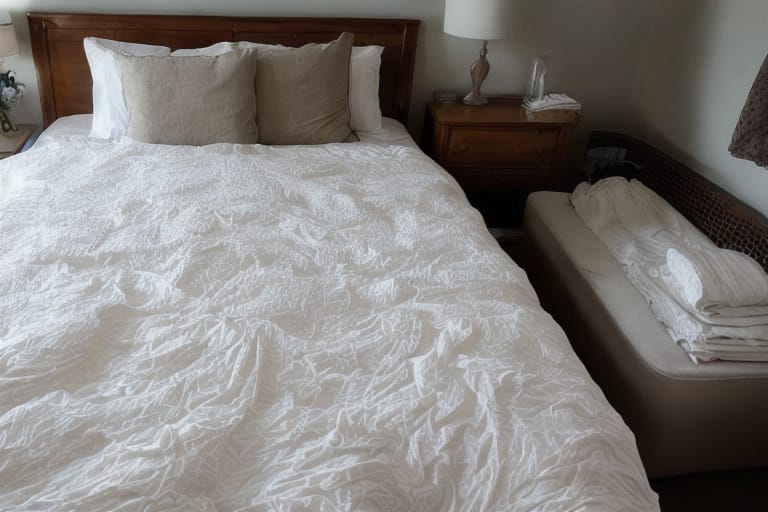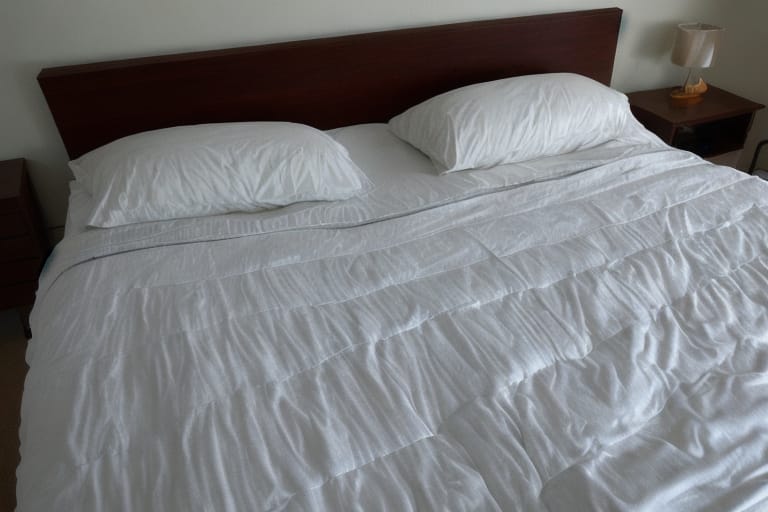Have you ever wondered why your down-filled comforter makes so much noise when you move around in bed? The crinkling and rustling sounds coming from under the covers can be annoying, especially for light sleepers. This article will explore the reasons behind the noisiness of down comforters and provide some helpful solutions.
What Causes the Noise in Down Comforters?
Down comforters are filled with the soft, fluffy plumage found under geese or ducks’ outer feathers. This down fill is valued for its exceptional warmth and insulation abilities thanks to the air pockets trapped between the fill’s three-dimensional clusters. However, these same air pockets are the root cause of the bothersome sounds emitting from the comforter.
As you shift positions in bed, the fill inside the comforter moves around. The outer fabric rubbing against the fill then causes rustling noises. Additionally, the down clusters compact together when compressed but make crinkling sounds when they spring back into a lofty shape.
The noises intensify under certain conditions:
- New comforters with overly fluffy or high fill power down
- Comforters with inferior barrier weave fabrics lacking downproofness
- Improperly cared for comforters with flattened, broken down fill clusters
- Low-quality construction with insufficient interior baffle boxes
Factors That Impact Sound Levels
Below are some of the critical elements that determine just how noisy your down-filled bedding may become:
Fill Power
This measures the loft and fluffiness of down insulation. Higher fill powers between 600-900+ are warmer but also create more internal air pockets that can cause shuffling sounds. Lower fill power down around 500-600FP makes less noise.
Fabric Quality
The outer shell fabric plays a vital role. Tightly-woven, downproof barrier weaves using premium materials will muffle noises better than cheaper, permeable fabrics that allow fill to leak through. High thread counts ≥300 offer improved durability and longevity as well.
Design and Construction
A comforter’s internal baffle box design, stitching quality, and amount of fill impact sound levels. Box baffle construction with denser quilting prevents fill from shifting as much while sewn-through boxes with less down are louder. Stronger stitch reinforcement also reduces tearing noises long-term.

Tips to Reduce Noises in Down Comforters
Luckily, there are some simple solutions for decreasing the bothersome rustling and crinkling sounds coming from your down bedding:
- Break in the comforter over time so the fill becomes less airy and lofty. The noises should diminish.
- Use lightweight summer comforters with less fill rather than ultra-fluffy winter ones to eliminate excessive air pockets.
- Add a coverlet or duvet over the comforter to help muffle and absorb sounds through another fabric layer.
- Utilize white noise machines or fans to mask background comforter sounds as you sleep.
- Ensure proper care and maintenance to maximize fill loft and prevent internal material shifting.
- Buy high fill power down proof comforters specifically designed to contain fill with tightly-woven fabrics without leaks.
- Upgrade bedding to include high thread count sateen shell fabrics and baffle box construction if excess noise continues to be an issue.
| Product | Fill Power | Fabric | Price |
|---|---|---|---|
| Luxury White Goose Down Comforter | 600 FP | 300 TC, 60% cotton/40% polyester sateen, Downproof | $169-$289 |
| Basic White Down Comforter | 550 FP | 230 TC, 60% cotton/40% polyester, Not downproof | $79-$99 |
| Premium Down Alternative Polyester Comforter | PrimaLoft synthetic fill | 400 TC, 100% microfiber polyester | $119-$159 |
What About Other Comforter Fill Materials?
While quality down offers unparalleled softness and insulation for comforters, the noise may be a dealbreaker for some sleepers. Alternative fills typically make little to no noise, providing viable options:
- Synthetic fills like polyester and PrimaLoft microfibers won’t rustle or crinkle. However, they mimic down’s warmth less effectively.
- Natural wool and cotton batting provides muted sound levels with added breathability.
- Silk, milkweed seed pod fiber, and kapok fill offer lofty warmth very quietly.
- Vegan-friendly fills like recycled plastic bottles or eucalyptus fibers are also noise-free.
Ultimately, the trade-off comes down to your priorities between sound minimization vs. luxury comfort and heat retention.

Frequency asked questions
Why does my down comforter make so much noise?
The fluffy, airy down fill inside comforters creates internal air pockets that produce sound when compressed together. These clusters rustle against the outer fabric when disturbed. Higher fill power down with more space between clusters makes the most noise.
How do I make my down comforter quieter?
Using a coverlet, choosing lower fill powers like 550FP, and buying downproof fabrics can all help muffle sounds. Proper maintenance to maximize loft also keeps the fill from becoming compacted and noisy over time.
Are alternative comforter fills quieter than down?
Yes, synthetic fills like polyester or natural fibers like cotton don’t tend to make noise so they can resolve sound issues for light sleepers. The trade-off is often less cloud-like softness, warmth, and durability compared to premium down.
Should I get a down-alternative comforter if I want no noise?
For those sensitive to sound at night, alternative fills do eliminate noisewell. Varieties like PrimaLoft synthetic, organic cotton, wool, silk, milkweed, or recycled plastic work quietly while retaining comfort and convenience compared to down.
Is high fill power or low fill power down quieter in comforters?
Low fill power down around 500-550FP leaves less open space between the small, dense clusters so that there is less room for them to shift and rustle audibly. Therefore, low-fill comforters make less sound than fluffier high-fill options over 700+FP.








